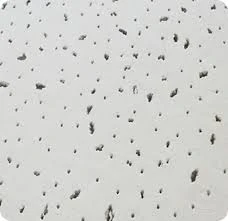Nov . 25, 2024 19:00 Back to list
Secure Your Space with an Innovative Ceiling Trap Door Lock Solution for Safety
The Ingenious Design of Ceiling Trap Door Locks A Gateway to Security and Secret Spaces
In the world of architectural design, security often meets functionality in the most unexpected ways. One such innovation that embodies this blend is the ceiling trap door lock. While it may sound like something out of a spy movie or a medieval castle, the ceiling trap door lock serves a prominent purpose in modern architecture spaces, whether for residential, commercial, or security applications. This article explores the fascinating design, practical applications, and security features of ceiling trap door locks.
Understanding the Ceiling Trap Door
A ceiling trap door is a hinged opening in the ceiling that provides access to spaces above it—such as attics, storage areas, or even mechanical rooms. Traditionally, trap doors are found in floors, but their ceiling counterparts can lead to hidden areas that are less frequently accessed. The integration of a locking mechanism serves to secure these entries from unauthorized access, making them ideal for spaces requiring heightened security.
Design Features
The design of a ceiling trap door lock must take into account several key factors accessibility, security, and aesthetics. A well-designed trap door should be discreet and blend seamlessly with the overall architectural style of the room. High-quality materials are typically used in their construction to ensure durability and resilience against wear and tear.
The locking mechanism is crucial. Many ceiling trap door locks employ steel bolts or deadbolts that secure the door firmly against the frame when engaged. For added security, some designs integrate electronic locking systems that utilize keypads or biometric scans, thus reducing the risk of unauthorized access. These modern locks are often programmed to allow only specific users entry, turning a simple ceiling access point into a secure gateway.
Practical Applications
ceiling trap door lock

Ceiling trap doors are utilized in various environments. In homes, they can provide discreet access to attics or insulation spaces, allowing homeowners to store seasonal items or ensuring maintenance of heating and cooling systems. In commercial settings, they can lead to mechanical rooms housing critical equipment without taking up ground-level space.
Moreover, they play a vital role in security applications. Safe rooms or panic rooms often incorporate ceiling trap doors as an escape route. They allow occupants to exit discreetly, reducing the likelihood of detection in the event of a home invasion or emergency. Additionally, in vaults or storage facilities, ceiling trap doors enable security personnel to monitor areas without obvious entrances.
Security Benefits
The security benefits provided by ceiling trap door locks are significant. Due to their elevated position, they are often overlooked as potential entry points, presenting an opportunity for discreet access. A well-secured ceiling trap door can deter intruders simply by virtue of its hidden nature and complexity of the locking mechanism.
Furthermore, incorporating advanced locking systems fortifies security measures. Alarm systems can be linked with these locks, providing alerts if unauthorized access is attempted. Some sophisticated systems even allow for remote monitoring, sending updates to homeowners or security personnel if the lock is tampered with.
Conclusion
In conclusion, ceiling trap door locks exemplify how innovative design can serve multifaceted purposes, from providing discreet access to ensuring secure environments. Their ability to integrate seamlessly into both residential and commercial designs highlights the importance of accessibility without sacrificing security. As technology advances, these locks are likely to evolve further, offering even more sophisticated solutions to meet the growing demands for security and efficiency in our modern architectural landscape. Whether utilized for practical storage or as a critical security feature, ceiling trap door locks remain an ingenious solution that satisfies both safety and style, transforming ceilings from passive structures into dynamic access points.
-
Quality Ceiling Trap Doors & Access Panels | Easy & Secure AccessNewsAug.30,2025
-
Durable Ceiling T Grid Systems | Easy InstallationNewsAug.29,2025
-
PVC Gypsum Ceiling: Durable, Laminated Tiles for Modern SpacesNewsAug.28,2025
-
Pvc Gypsum Ceiling Is DurableNewsAug.21,2025
-
Mineral Fiber Board Is DurableNewsAug.21,2025
-
Ceiling Tile Clip Reusable DesignNewsAug.21,2025







